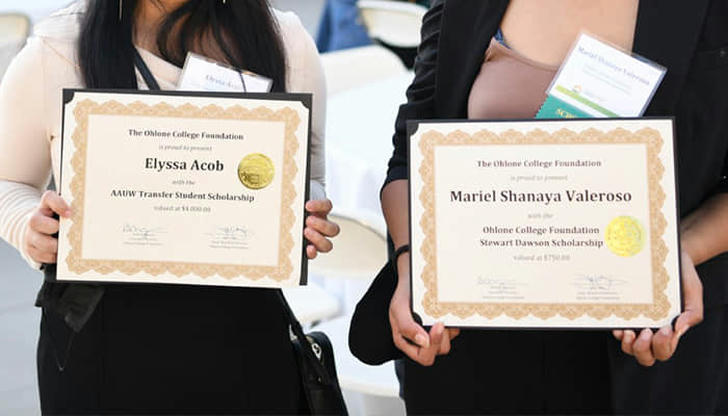Demystifying the Maze: A Guide to University Scholarships and Funding
The soaring costs of higher education can feel like an insurmountable obstacle. Thankfully, a complex yet rewarding system of scholarships and funding exists to help bridge the financial gap. Understanding this system and navigating its various components empowers you to embark on your educational journey with greater confidence. Let’s delve deeper into the key players and types of financial aid available to make your college dreams a reality.

Types of Aid
Scholarships: Scholarships are monetary awards that typically do not require repayment. They can be awarded based on a range of factors, including academic performance, extracurricular involvement, chosen field of study, or financial need. Receiving a scholarship alleviates financial pressure, allowing you to focus on your academic pursuits.
Grants: Grants, much like scholarships, are forms of gift aid typically awarded by the government, states, or universities based on demonstrated financial need. They act as a crucial safety net, ensuring that financial limitations don’t hinder your educational aspirations.
Work-study: Federal Work-Study programs offer a unique opportunity to contribute to your educational expenses while gaining valuable work experience. These programs provide part-time jobs on campus or with approved employers, allowing you to earn money while you learn. Work-study programs not only ease some of the financial burden but also equip you with transferable skills that enhance your resume.
Loans: Student loans differ from scholarships and grants in that they do need to be repaid with interest. Federal loans generally offer more favorable interest rates and repayment terms compared to private loans. Taking on student loans requires careful consideration and a solid plan for repayment after graduation. Loans are a valuable tool for financing your education, but they should be approached strategically to avoid future financial strain.

Funding Sources
Federal Grants: The federal government stands as the most significant source of need-based financial aid. The Pell Grant, widely recognized as the cornerstone of federal financial aid programs, is awarded based on a student’s financial need and does not require repayment. This grant acts as a foundational layer of support, paving the way for further funding opportunities.
State Grants: Many states offer their own grant and scholarship programs, specifically designed to incentivize students to attend in-state colleges and universities. Eligibility criteria and award amounts vary considerably depending on your state of residence. Researching your state’s specific programs is crucial to maximize your financial aid potential.
University Scholarships and Grants: Universities themselves are often treasure troves of scholarship and grant programs. These awards may be funded by the university’s endowment, alumni donations, or specifically designated programs. The criteria for receiving these awards can be merit-based, need-based, or a combination of both. Merit-based scholarships reward academic achievements or exceptional talents, while need-based scholarships prioritize students with financial constraints.
Private Scholarships: Beyond federal and state aid, a vast universe of private scholarships awaits exploration. Offered by a diverse range of organizations, corporations, foundations, and even individuals, these scholarships can be remarkably specific. Awards may target students pursuing specific majors, those with unique backgrounds, or even students who excel in particular hobbies. The sheer variety of private scholarships underscores the importance of diligent research to unearth opportunities that align with your academic and personal profile.

Finding Scholarships and Funding
Financial Aid Office: The University’s financial aid office is the first and most crucial resource in your scholarship and funding quest. They can provide comprehensive guidance on navigating the application process for federal and state aid programs, answer your questions, and help you identify scholarships and grants administered by the university itself. Don’t hesitate to leverage their expertise to streamline your financial aid search.
Scholarship Search Websites: The internet offers a plethora of scholarship search websites that aggregate scholarship opportunities across various fields and demographics. While these websites can be a valuable starting point, it’s essential to be cautious of scholarship scams. Focus on reputable websites with a proven track record of connecting students with legitimate scholarships.
University Websites: Many universities list their own scholarship and grant opportunities directly on their financial aid or admissions web pages. Regularly checking these web pages ensures you don’t miss out on scholarships offered by your university.

Applying for Scholarships and Funding
FAFSA: The Free Application for Federal Student Aid (FAFSA) is much more than just a form--it’s your key to unlocking a wealth of financial aid opportunities. Completing the FAFSA is crucial not only for federal grants like the Pell Grant but also for many state grants and scholarships offered by individual colleges and universities. So, prioritize completing the FAFSA accurately and on time to maximize your eligibility for need-based aid.
Scholarship Applications: Individual scholarships often operate on their own timelines and application procedures. Unlike the FAFSA, which is a centralized application, each scholarship may have its own unique application form, essay prompts, reference requirements, and deadlines. Missing a deadline can disqualify you from the scholarship altogether. Therefore, careful organization is key. Even seemingly small scholarships can add up, making a significant difference in your overall financial aid package.
In conclusion, navigating the university scholarship and funding system may seem complex, but with dedication and research, you can unlock a wealth of resources to finance your education. Please remember that you’re not alone in this journey. Start early, utilize the support offered by your university’s financial aid office, and explore all available options. With a strategic approach and a little perseverance, you can bridge the financial gap and turn your college dreams into reality.
